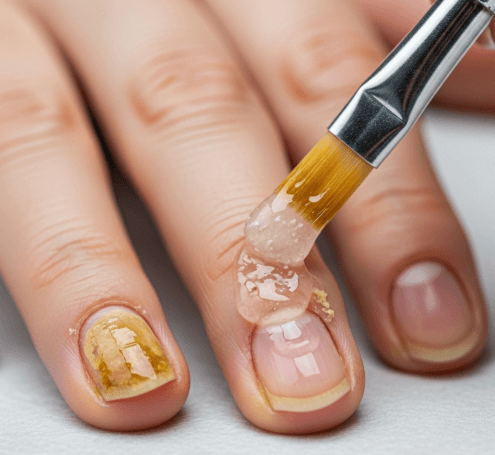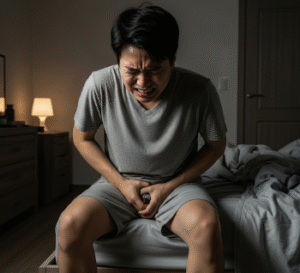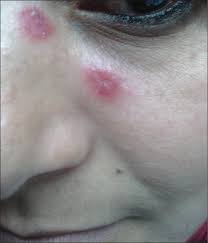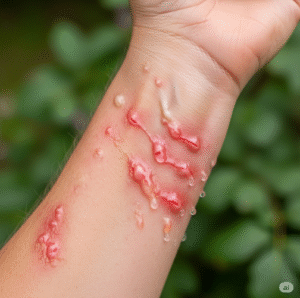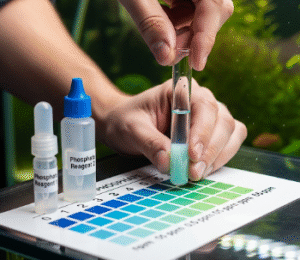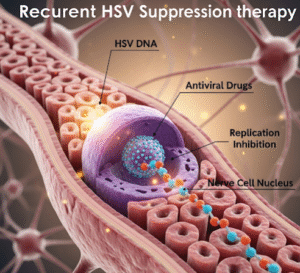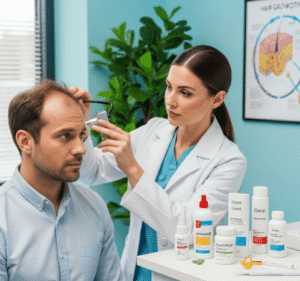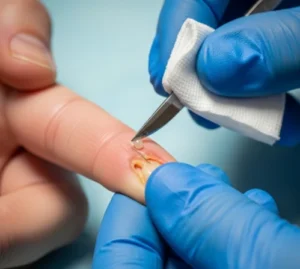Nail Psoriasis Therapy in Korea
What it is
→ Nail psoriasis is a chronic inflammatory condition that affects the nails of individuals with psoriasis. It occurs when the immune system mistakenly triggers skin cells to grow too quickly, leading to thickening, discoloration, pitting, and deformation of the nails.
→ The condition can affect both fingernails and toenails. Common visible signs include yellow-brown discoloration, white patches, crumbling of the nail surface, pitting (tiny dents), detachment of the nail from the nail bed (onycholysis), and thickened nail plates.
→ Nail psoriasis therapy refers to the range of medical and non-medical treatments used to reduce symptoms, improve nail health, and prevent further damage. It is not a quick fix because nails grow slowly, and visible improvements may take months.
Why it’s done
→ Nail psoriasis is more than just a cosmetic problem. It can cause pain, discomfort, and functional limitations in daily activities such as typing, writing, or wearing shoes.
→ It is also linked to psoriatic arthritis, meaning patients with nail psoriasis often experience joint pain or inflammation. Early therapy may help reduce the severity of joint involvement.
→ Psychologically, nail psoriasis can be distressing. Many patients feel self-conscious about their hands or feet. Effective therapy aims to restore both physical function and confidence.
→ Treatments are done to reduce inflammation, slow abnormal nail growth, restore nail appearance, and prevent infections that may arise due to weakened or detached nails.
Alternatives
→ While there is no permanent cure, there are several alternative options to manage nail psoriasis:
- Topical therapies → corticosteroid creams, vitamin D analogs, tazarotene (retinoid gel), or calcineurin inhibitors applied around and under the nail.
- Systemic medications → methotrexate, cyclosporine, acitretin, and biologic injections (like adalimumab, secukinumab, ustekinumab). These are usually for severe cases with skin and joint involvement.
- Phototherapy (PUVA or UVB light therapy) → controlled exposure of nails to ultraviolet light, sometimes combined with psoralen medication.
- Intralesional steroid injections → injecting corticosteroids directly into the nail matrix or nail fold for targeted relief.
- Lifestyle modifications and natural remedies → moisturizing nail beds, avoiding trauma (no aggressive manicures), and dietary changes rich in omega-3 fatty acids.
- Camouflage options → nail wraps, medicated polishes, and cosmetic covers to improve appearance while therapy is ongoing.
Preparation
→ Preparing for nail psoriasis therapy involves both medical and personal steps:
- Dermatology consultation → A dermatologist will examine the nails, possibly order imaging or lab tests, and decide if the therapy should be topical, systemic, or combined.
- Lifestyle preparation → Patients should keep nails short, avoid nail-biting or peeling, and wear gloves when using chemicals or water frequently.
- Pre-treatment instructions → In cases of systemic drugs, blood tests are usually required to check liver and kidney function.
- Moisturization → Regularly applying thick creams or ointments before therapy helps improve absorption of medications.
- Avoid nail trauma → Since nail injury worsens psoriasis, patients should avoid hard manicures, rough filing, or wearing tight shoes before starting therapy.
How it’s Done
→ Nail psoriasis therapy varies depending on severity:
- Mild cases → Usually treated with topical creams, medicated polishes, or vitamin D analogs applied daily to nails and cuticles.
- Moderate cases → Intralesional corticosteroid injections into nail folds may be done every 4–8 weeks. These are performed under local anesthesia in a clinic.
- Severe cases → Biologic therapy is prescribed, usually administered as subcutaneous injections at regular intervals (every 2–8 weeks depending on drug type).
- Phototherapy → Nails are exposed to ultraviolet light under controlled conditions. Sometimes, nails are pretreated with psoralen to increase light sensitivity.
- Adjunctive care → Nail softening creams, keratolytic ointments, and antifungal medication if fungal infection coexists.
→ Each treatment session is usually quick, but results are gradual, requiring months of consistency before visible nail improvement.
Recovery
→ Recovery is not immediate because nails grow slowly (about 2–3 mm per month for fingernails and 1 mm for toenails).
- Initial improvement → May take 3–6 months.
- Full nail regeneration → May take 9–12 months for fingernails and 12–18 months for toenails.
→ During recovery, patients should:
- Moisturize nails daily with thick creams.
- Protect nails from trauma with gloves or cushioned shoes.
- Follow-up appointments every few weeks to adjust therapy.
- Monitor side effects of systemic or biologic drugs through routine blood tests.
→ Patience is essential, as discontinuing therapy prematurely can lead to relapse.
Complications
→ Although therapies are effective, they can have complications:
- Topical therapy risks → skin thinning or irritation if corticosteroids are used excessively.
- Intralesional injections → pain, bleeding, or infection at the injection site.
- Systemic drugs → potential liver, kidney, or immune system side effects; hence regular monitoring is required.
- Biologics → increased susceptibility to infections such as tuberculosis or upper respiratory infections.
- Phototherapy → risk of skin burning, hyperpigmentation, or premature aging of skin around nails.
- Psychological burden → frustration due to slow recovery and cosmetic concerns.
→ Untreated nail psoriasis may lead to permanent nail deformities, fungal infections, or worsening psoriatic arthritis.
Treatment options in Korea
→ In Korea, nail psoriasis therapy is advanced and widely available, thanks to the country’s dermatology expertise and modern clinical facilities.
- Specialized dermatology clinics in Seoul, Busan, and other major cities provide both topical and systemic treatments tailored for nail psoriasis.
- Biologic therapies are widely used in Korea for moderate-to-severe cases. Dermatologists often recommend secukinumab, ixekizumab, or guselkumab, which are approved and commonly prescribed.
- Phototherapy centers in Korea are equipped with narrow-band UVB devices, and some dermatology hospitals provide excimer laser treatments specifically targeted for nail psoriasis lesions.
- Integrative care → Korean dermatologists often combine Western medical therapy with herbal medicine or nutritional counseling, especially in integrative skin clinics.
- Advanced nail care centers provide medical nail camouflage treatments that improve appearance while therapy continues. This is popular among Korean patients due to the country’s emphasis on aesthetics.
- Patient education programs are emphasized in Korean hospitals, teaching nail care, dietary adjustments, and lifestyle modifications alongside treatment.
→ Korean dermatology has also become a hub for clinical research on psoriasis biologics, meaning patients often have access to newer drugs earlier than in many other countries.
→ With Korea’s strong beauty and wellness culture, patients also benefit from specialized nail spas supervised by dermatologists, ensuring cosmetic nail care without worsening psoriasis.

